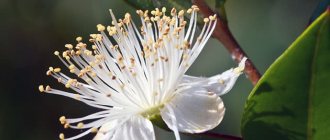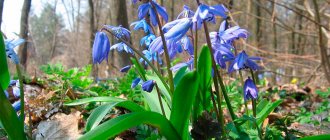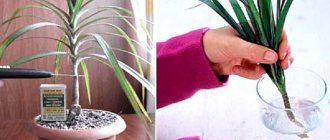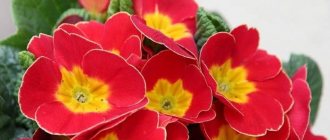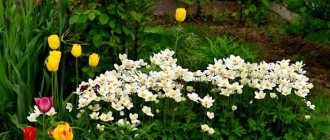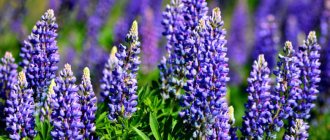The unusual name of the plant is associated with the handsome Adonis, lover of the goddess of love and beauty Aphrodite. At her request, the boy was raised by Persephone in the kingdom of the dead. When he grew up, a dispute broke out between Aphrodite and Persephone about where the young man should live next. They say that Zeus himself ordered him to live on Earth in the summer and return to the underworld in the winter.
Aphrodite was happy and walked a lot with Adonis through the gardens and meadows. But one day, during a hunt, the young man was killed by a wild boar, and then from the drops of blood a beautiful scarlet flower appeared, which was later named after him. There is another common name for this plant - adonis.
Adonis spring photo
Photo and description: features of Adonis
This bright flower belongs to the Ranunculaceae family (in Latin - Adonis vernalis, due to which another name is common - vernalis). But only the spring variety of the plant is called this way.
Adonis includes 25 varieties of herbaceous plants , it can be annual or perennial, spring or autumn, the color of the petals is often sunny yellow, less often scarlet.
The plant can slightly exceed half a meter in height. The stem is erect, the shoots are ordinary or bushy. The foliage of the adonis is remarkable - it is small, palmate or pinnate, as if cut into slices.
The calyx of the flower is formed by 10–20 petals and reaches 6 cm in diameter.
Types of Adonis
The history of adonis as a gardening plant begins in the 17th century: it was then that it began to appear in flower beds and flower beds.
Annual representatives
The popularity of adonis is limited by its toxicity. However, if you take basic precautions, it will decorate your garden.
Summer red adonis (Adonis aestivalis)
It is found in Europe, the European part of Russia and Central Asia. The shoots of the plant are up to half a meter high, erect, and can branch, but not always.
The calyx of the flower is small, about 30 mm. The petals are bright, red, with a small dark spot in the center. Flowering occurs in the summer months.
Autumn Adonis (Adonis annua)
The homeland of Adonis annua is the Mediterranean region. The plant is more miniature, only about 30 cm high. The leaf blades are dissected.
Flower petals can be yellow or red, they frame a dark core. The cup diameter is only 15 mm.
Perennial representatives
There are significantly more of them than annual ones.
Golden Adonis (Adonis chrysocyathus)
The species is listed in the Red Book and is considered rare. In addition to its high decorative qualities, the plant has a high medicinal potential, for which it is valued.
Adonis Turkestan (Adonis turkestanicus)
Endemic to Altai and the Pamir Mountains. The color of its corollas is noteworthy: the outer part of the petals is blue, and the inner part is yellow-orange.
Interesting! A bush can simultaneously contain ovaries, buds and open flowers.
Turkestan adonis is a medicinal plant, widely used in folk medicine.
Volga Adonis (Volgensis)
The bush is stocky and compact (up to 30 cm). The stem begins to branch approximately from the middle of its growth; the shoots and leaves of the adonis are densely pubescent. The petals are painted sunny yellow.
Adonis fluffy (Villosa)
It can be found on the edges of birch groves in Siberia and the steppe plains of Kazakhstan. The shoots are solitary, 15 cm in height, densely pubescent at the beginning of development. The flowers are light yellow.
Siberian adonis (Sibirica)
The stems are tall, with dissected leaf blades and single yellow flowers. The diameter of flower cups can reach up to 60 mm.
Mongolian (Mongolica)
The plant is distributed throughout Mongolia and prefers abandoned pastures. One bush can have up to 30 stems. The diameter of the white flower cups reaches 50 mm.
Spring (Vernalis)
The bush forms many stems, which at the beginning of flowering barely exceed 15 cm in height, and by the end of flowering they can exceed half a meter. Yellow flowers reach 70 mm in diameter.
Adonis amurensis (Adonis amurensis)
Endemic to the Far East, Japan and China. At the beginning of flowering, the plant is slightly more than 10 cm in height, and by the end it stretches up to 35 cm.
The petals are golden yellow, and the corolla diameter is about 50 mm. Based on this adonis, breeders have developed several varieties.
Other types of Adonis
We list the popular varieties of garden plants:
- adonis cherubino;
- adonis coal;
- adonis red riding hood;
- adonis otogari;
- adonis hinomoto;
- adonis benten.
Reproduction methods
Adonis is propagated in two ways:
- dividing the bush;
- growing from seeds.
Reproduction of perennial Adonis by dividing bushes
Only perennial plants are suitable for such propagation , since Adonis is not subjected to such stress until it is 5 years old. Division is carried out in the fall after the bush has bloomed; For work, take a sharp sterile blade.
The bush is divided in such a way that each part has a fairly long rhizome and at least two buds. The sections are treated with charcoal dust and immediately planted in prepared areas.
Propagation of perennial Adonis by seeds
Seeds collected from garden plants must be sown immediately, since they are poorly light and cannot be stored at all (more precisely, they lose the ability to hatch).
The best seeds are produced by plants aged 5–7 years . They are sown starting at the end of October in prepared beds. There is no need to bury the seeds more than 1–1.5 cm.
Important! Crops require shelter in advance of impending frosts. You can use spruce branches, hay or peat. Plants that have reached 2 years of age do not need shelter.
Caring for an adult plant
The main condition for successfully growing adonis is frequent watering. In this case, you should not expect the top layer of soil to dry out. As soon as a crust appears on the ground, it needs to be loosened. The bushes are earthed up, the renewal buds located at the base of the shoots are sprinkled with earth.
Periodic feeding of the plant is carried out with complex fertilizer: before flowering, as well as in the fall. The emerging flowers should not be used for cutting for at least two years. This is necessary in order to avoid damage to the renewal buds, which appear just after 2-3 years.
Since Adonis is poisonous, it is not attacked by insects. The plant is also very disease resistant, so no action will need to be taken by the gardener.
Collecting seeds and preparing for winter
The seeds are collected at the moment of falling or slightly in advance (slightly unripe). There is no point in storing the material, so it is immediately mixed with wet sand and embedded in the ground.
The Adonis plant is resistant to winter frosts and survives the cold season without shelter. Nevertheless, young plantings and divisions planted in autumn are covered with peat and spruce branches. After a year, the plant will get stronger and will be able to do without additional insulation.
Growing Adonis from seeds
Growing adonis from seeds is difficult, but for a persistent gardener it is possible, and the method of growing annuals and perennials differs.
Technology for growing annual plants
Seeds of annual adonis are planted no later than November immediately in the ridge. They are buried 1.5 cm into the ground, sprinkled with earth and covered, protecting them from frost.
Technology of growing perennial plants
Perennial adonis is planted in pots. To stimulate spring growth, keep the pots in a cool place.
Growing seedlings and planting in open ground
With the onset of spring, the pots are placed in a place illuminated by bright but diffused rays. Typically , seedlings appear when the air temperature rises to +20 °C .
The seedlings must be thinned out after germination; the distance between the sprouts should be about 15 cm. Water the seedlings moderately and carefully.
Planting in open ground
To transplant into the ground, the sprouts must reach 4 months of age . The best place for planting strong, well-formed seedlings will be a bed located on well-fertilized soil.
It is good if the sun illuminates the ridge in the morning, and partial shade forms in the afternoon.
The step between plantings is kept at 20 cm, the holes are prepared deep enough to fit the entire root. When all the sprouts are planted, the bed is watered and covered.
Attention! In the first year, there is no need to wait for adonis to bloom, since it develops rather slowly.
Transplantation
In a few years, when the Adonis matures and gets stronger, it can be transplanted to a permanent place. Plants are planted whole; dividing the rhizome is not recommended. Adonis is replanted with a large moistened ball of soil at a distance of 50-60 cm from each other. An old gardening book advises placing a layer of clay shards at the bottom of the hole, which should be covered with leaf soil, and only then can the plant be planted. This is done only once, otherwise the plant will get sick and most likely die.
But if after the transplant the Adonis takes root, then it will please the owners for a very long time, at least a century. Every year in April, wonderful bright yellow flowers will open, which will please the eye for 3 whole weeks. The leaves will remain green until late summer.
Diseases and pests
Since all parts of the adonis are toxic, and the highest concentration of poison is in the root, pests avoid contact with the plant.
The most common diseases:
- Rot . Improper watering, accumulation of moisture in the soil - this is enough for rotting to begin. A preventive measure would be good drainage and moderate watering of Adonis.
- Fusarium . The fungus causes a change in the structure of the stem and wilting of the flower. A control measure will be treatment with the antifungal agent "Benomil".
Chemical composition
Active ingredients
The herb contains cardiac glycosides (cymarin, adonitoxin, etc.), saponins, adonidoside, adonilic acid, quinones, phytosterol and coumarins. In terms of the nature of their effect on the heart, adonis preparations occupy an intermediate position between strophanthus and foxglove. The biologically active substances of this plant accumulate less in the body than digitalis preparations, which have a more pronounced sedative and diuretic effect.
In addition to cardenolides, coumarin (vernadine) was found in the roots and rhizomes.
Medicinal properties and contraindications
Adonis vernalis has the most striking . The stems of the flower and its flowering part are harvested.
The high concentration of useful substances and their unique composition is a simple answer to why spring adonis has been used in folk medicine since ancient times.
For heart disease
The use of drugs based on Adonis vernalis normalizes cardiac activity, improves the condition of blood vessels and the circulatory system as a whole .
For diseases of the nervous system
Medicines based on Adonis vernalis are used to reduce nervous excitability, anxiety conditions and chronic insomnia .
Contraindications
In addition to its unique medicinal properties, adonis also has serious contraindications for use.
It is prohibited to take medications based on Adonis vernalis:
- during pregnancy and lactation;
- for acute gastrointestinal diseases (ulcers, gastritis);
- hypertension will be a 100% contraindication;
- children under 3 years of age;
- high level of blood clotting.
Difficulties of cultural breeding
Plant cultivation is very difficult. This is due to the fact that Adonis seeds germinate very poorly, some can only germinate in the second year, and many do not germinate at all. At the same time, the problem is that the seeds must be planted immediately after they are collected. The sprouts are also very capricious - they love the sun, but disappear from sunburn, they love moisture, but the roots rot from its excess.
Next, the plant will gain strength over the course of 4-5 years. Only after this will it be possible to cut the adonis for harvesting. Not to mention that the plant gains full strength after several decades. In this regard, at the moment, spring Adonis is planted mainly with rhizomes.
Use of spring Adonis: recipes
Let's list the most common adonis-based products.
Important! Before use, consult your doctor and be sure to do an allergy test!
Adonis decoction
In an enamel bowl 1 tbsp. pour a spoonful of crushed adonis into a glass of boiling water. Leave covered for 20–25 minutes. Take the decoction 3 times a day, 1 tbsp. spoon.
Adonis alcohol tincture
The tincture is prepared for 14 days. To prepare it you need:
- 10 tbsp. spoons of vodka;
- 1 tbsp. spoon of crushed adonis.
This is an excellent sleeping pill and sedative. Take it in the form of drops, the maximum dose per day is 20 drops:
- at night before bedtime;
- divide into 3 doses of 5-6 drops.
Water tincture of adonis
Prepare this infusion by pouring 2 tbsp. spoons of herbs 250 ml of boiling water. Leave for 30 minutes. Drink 2 teaspoons three times a day.
Adonis tea
Pour a tablespoon of herbs into 2 cups of boiling water and leave until it cools. Take 1 spoon once an hour.
Preparation of Adonis and storage
Medicinal raw materials are prepared in the spring. Immediately after cutting (the plant cannot be pulled out by the roots so as not to destroy the flower), the material is dried.
It is better to use special installations that allow you to quickly dry the material .
Store adonis in a paper bag or fabric bag in a place protected from sunlight. Adonis retains its qualities for 3 years.
Important! The herb should be stored separately from other medicinal preparations.
There is no sadder story in the world...
The genus Adonis has more than 30 species, and some of them bloom with red flowers. Hence the legend about its appearance. As the myth says, Adonis was the son of King Cynaris of Cyprus and Myrrha. When he was born, the goddess of love Aphrodite, delighted with his beauty, kidnapped the child, hid it in a casket and entrusted the casket to Persephone, the wife of the king of the underworld. Persephone also liked him very much, and she refused to return the baby to Aphrodite. As always, the dispute between the ladies was resolved by a man - Zeus, and as always - by both ours and yours. According to his decision, Adonis had to divide the year between earthly life and the underworld.
On earth, Adonis often hunted in the mountains. One day, while hunting, he was attacked by the ferocious god Ares, who took the form of a wild boar. Adonis died, and Aphrodite, mourning her lover, buried him in the mountains of Cyprus. And so that he would be remembered forever, she commanded: let the drops of the blood shed by the young men sprout from the ground as beautiful flowers.

